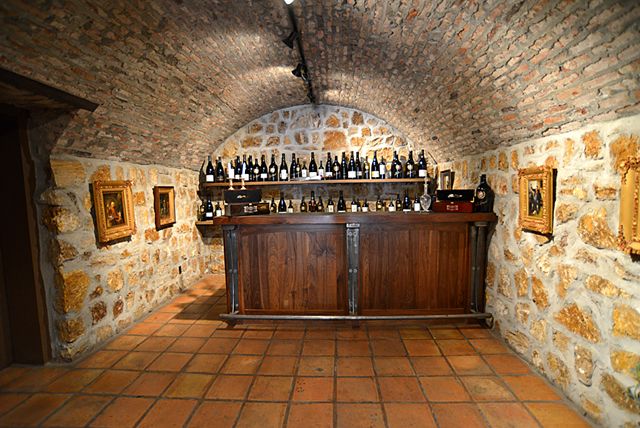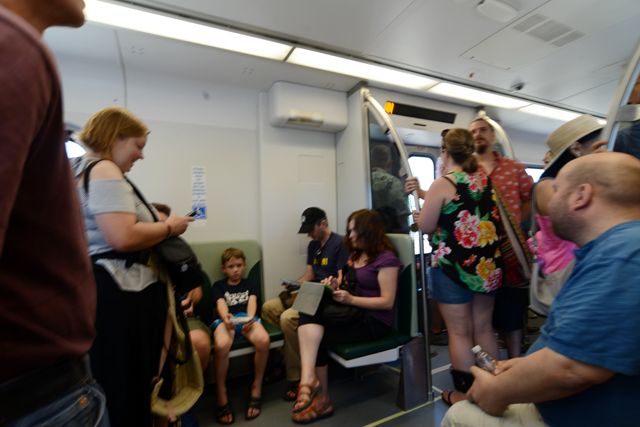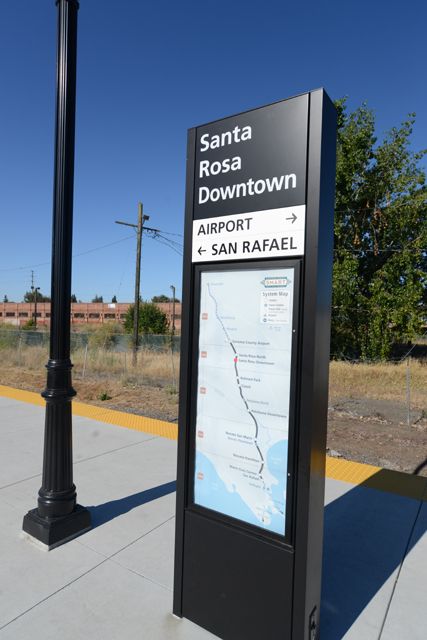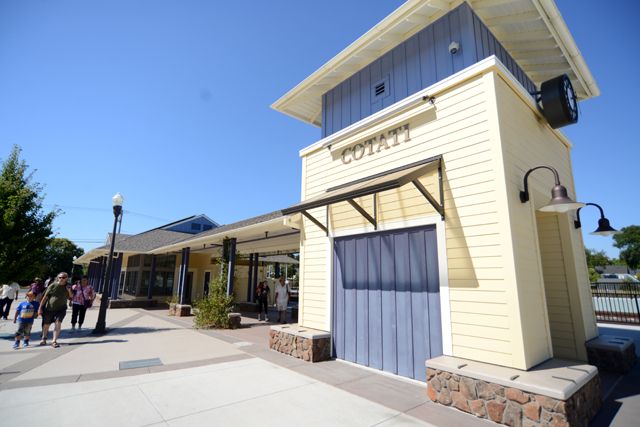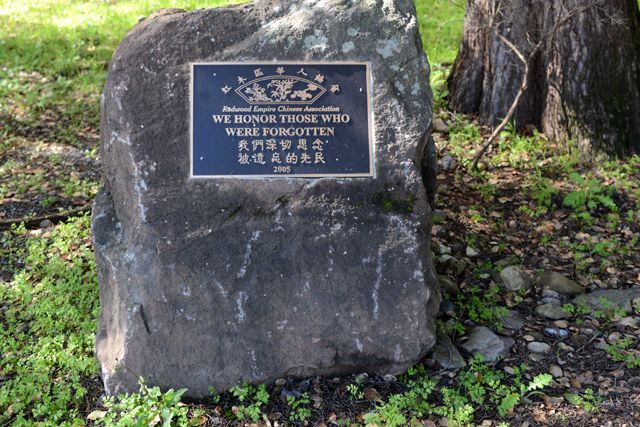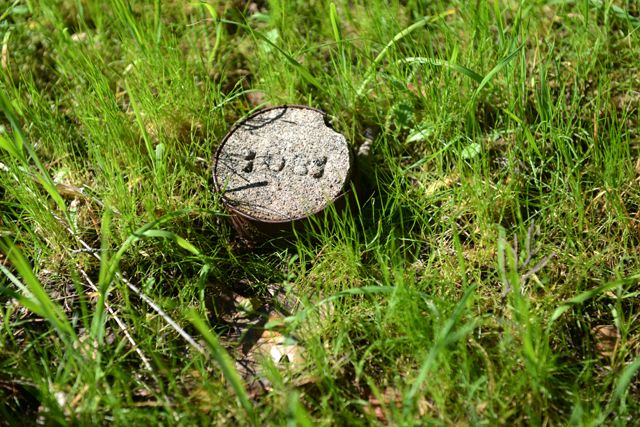- 在美國如何免費看電視:ROKU好用嗎? [2013/10]
- 哈佛的故事:真假習明澤 [2015/04]
- 有史以來最蠢的哈佛學生? [2013/12]
- 華為思科的血海深仇是怎樣結下的? [2018/12]
- 付不起學費?美國上大學的省錢之道 [2013/09]
- 在美國養個娃有多貴? [2015/01]
- 紐約哈萊姆區探秘 [2015/05]
- 學鋼琴有用嗎? [2011/09]
- 斯坦福直線加速器SLAC探秘 [2015/09]
- 我們應該為孩子買房嗎? [2015/03]
- 選擇的負擔:我們為什麼要移民? [2014/10]
- 數學「諾貝爾獎」揭曉:又沒中國人啥事 [2014/09]
- 好男人都死哪兒去啦? [2016/09]
- 中國教育是世界第一嗎?從PISA考試談起 [2013/12]
- 家有才女 大事不好 [2011/12]
- 美國大選:投了也白投,白投也要投 [2012/10]
- 進村一周年感言:桃源夜話 [2012/06]
白露為霜注:2017年8月25日是個重要的日子。在加州北灣消失了半個多世紀之後,客運火車又回來了,鐵路再次將馬林縣的聖拉菲爾(San Rafeal)到索諾瑪縣的聖塔路莎(Santa Rosa)之間的一系列城鎮聯結起來。環保主義者為之雀躍,因為這為人們減少汽車的使用提供了一種選項。火車有多少實用還需要時間的驗證。我對這條被稱為SMART線的火車感興趣更多是懷舊,因為這條鐵路的前身有一段是中國人造的。我們的前輩不但給北灣留下了鐵路,還為聖塔路莎留下了一個小小的唐人街,引出故事好長,好長。
本文是小寶14歲時為本地的一家英文報紙寫的專欄,講述一段很少有人知道的華人血淚和奮鬥史。這個史詩般的故事發生在北灣的索諾瑪縣,但又具有相當的普遍性,可以說是100多年來華人命運的寫照。川普時代種族問題、移民問題、仇恨組織等重新成為人們辯論的焦點,在這個時候將這篇文章翻譯成中文是有意義的。
Santa Rosa唐人街的故事
(上篇)
灣區外圍的索諾瑪縣當然不是紐波特港(Newport Harbor)或拉古納海灘(Laguna Beach)。北灣以外很少人聽說過我們這個古色古香的小角落,綿延起伏的丘陵,看不到頭的葡萄園,以及新鮮輕鬆的空氣。但除了不可否認的自然風光之外,本縣與灣區其他社區不大一樣的地方是它的歷史,與華人歷史交織在一起的一個豐富綿長的故事。
你知道小城聖塔路莎(Santa Rosa)曾經有過唐人街嗎? 十九世紀中期淘金熱后,中國人湧入美國,希望在傳說中的「金山」發財致富。他們的勤勉努力,在許多不同的職業上有出色的表現。在門多西諾(Mendocino)縣,中國勞工曾經是伐木工人。在馬林(Marin)縣,他們是打魚捉蝦的好手。在索諾瑪縣,華人成為今天仍然蓬勃發展的釀酒業的最早的工人。
1857年,中國勞工受雇於號稱是加州葡萄酒業之父的古斯頓·哈拉西(Count Agoston Haraszthy),在索諾瑪的Buena Vista葡萄園中做工(白露為霜註:Buena Vista酒庄是加州最老的酒庄之一,現在還在運營中)。他們暴破並挖掘了用於儲存葡萄酒的地窖,在酒廠從事各種工作像注酒,加軟木塞,給酒瓶繞鐵線等工作。有人估計,如果沒有中國勞工,加州葡萄酒業將會被延遲幾十年時間因為中國人承擔了許多白人不願意做的事情。
華人不僅活躍於葡萄種植業,他們還參與建設了最終從帕塔魯馬(Petaluma)到海爾斯堡(Healdsburg)的鐵路上,成功地將「鄉下人」連接到外部世界。
1868年,Frederick Bee的舊金山和洪堡灣公司(San Francisco and Humboldt Bay Co)使用幾乎是清一色的中國勞工從帕塔魯馬往北建造路基一直到離聖塔路莎三英哩的地方。後來工程停了下來,因為他的資金遇上了問題。1870年,Peter Donahue上校買下了Frederick Bee的利益並用愛爾蘭裔的勞工完成了中國人建造的路基。
1871年,正當Donahue的人正在朝向海爾斯堡方向建設時,加州太平公司(Cal
Pacific)的大多為中國勞工的隊伍也在建造一條前往同一目的地的平行路基。中國人發現自己處在鐵路公司間的激烈搏鬥的中心:他們和愛爾蘭人競相完成這條鐵路。中國人很快就以驚人的每天一英里的速度向前推進。
這是一個很不同尋常的場景。聖塔路莎人都跑出來觀看,一邊投下賭注,一邊加油歡呼,而愛爾蘭人和中國人齊頭並進,並相互辱罵和互丟土塊
(白露為霜註:中國人和愛爾蘭人進入美國的時間差不多,因為從事的職業接近、競爭激烈而變成了死對頭)。
這種瘋狂沒有持續很長時間。最終舊金山的大佬們介入,他們給了Donahue無法拒絕的好價錢。
加州太平洋公司購買了Donahue的公司,並獲得了完成該項目的權利。Donahue很照顧自己的員工,堅持要由他們完成這個項目。加州太平洋公司的中國人呢?他們被解僱了。
一些失去工作的中國鐵路工人留在聖塔路莎,並聚居形成為唐人街。時間是1871年:聖塔羅莎唐人街的元年。在隨後的幾年中索諾馬縣的中國人數量有大幅增長。大多數人被雇傭為家庭傭工,如廚師或僕人,或在家庭洗衣店工作。很顯然當時洗衣業務相當不錯。由於中國洗衣店不斷流出水來,聖塔羅莎的二街和Main Street(現在的聖塔羅莎大道)的角落被稱為「城鎮的下水道」(town dump)。
好景不常18世紀80年代后經濟開始惡化。許多白人認為「中國佬」(Chinamen)搶走了他們的飯碗,危及他們的生存機會。1882年聯邦政府頒布了「排華法」(Chinese Exclusion Act)– 一個針對中國人的歧視性的惡法,禁止他們移民到美國或成為美國公民。
索諾馬縣的反華情緒也很高漲。1886年反華人聯盟(Anti-Chinese League)成立,其目的就是將中國人趕出聖塔路莎。聯盟變著法兒(只是沒有達到直接的暴力)讓中國人的日子難過。他們拆毀中國人的房屋,突擊他們的鴉片店,迫使他們的鋪面停業。聯盟甚至在聖塔路莎的Mendocino大道掛上橫幅宣布:「中國佬必須滾。我們說到做到!」(The Chinese Must Go; We Mean Strictly Business!)。幾個月下來,華人的數量從600人跌到大約100人左右。
但是反華人聯盟的策略並不是完全成功的。中國人一次次地表現出他們是堅韌而頑強的一群。他們被推搡、被打倒,但有些人仍然是瘋狂或頑固的留下來。
1886年的大抵制阻礙了唐人街的發展,但宣布它的死亡的報告卻被誇大了。事實上,聖塔路莎的唐人街最終存在了近一個世紀,經歷了多個反華法令,1906年的大地震,大蕭條和兩次世界大戰。然而,就當大家開始相信唐人街幾乎是不死的,它卻意外地消失在歷史的迷霧中。
(下篇)
雖然唐人街近一個世紀以來一直位處聖塔路莎的市中心,但主流媒體基本上將其忽略。唐人街偶爾出現在市議會的議事日程上,多數是由於有人抱怨它成為公眾滋擾(public nuisance)。如果不是兩位不同尋常的美籍華人,聖塔羅莎唐人街的歷史可能會永遠不為人所知。
Song Wong Bourbeau出生於唐人街一個出名的家庭。她的祖父Jam Poy是「謹記」(Jam Kee)餐廳的創辦人,謹記是聖塔羅莎歷史上持續時間最長的餐館之一。她的父親Tom Wing是一名勞工承包商和一家中國寄宿家庭的經營者,被人戲稱為「唐人街市長」。
Song Wong可能是第一個經歷過索諾瑪縣公立學校的中國女孩,忍受了多年的公然歧視和虐待。她父親不得不送她去第四街上的Fremont Grammar School(現在是Santa Rosa Middle),放學后要接她,因為她經常受到其他孩子的威脅或毆打。Song Wong在索諾馬縣博物館的採訪中回憶道:「我有很長的頭髮,他們會把它綁在任何可以綁的東西上,把頭髮放在墨水瓶里」。
當時的唐人街由位於聖塔路莎大街和D街之間的第二街上的木製建築組成。這是一個約100人的自給自足的社區。Song Wong記憶到:「我們吃得東西都是自己種植飼養,雞、兔子和鴿子。如果我們想要什麼東西,我們就去後院拿,我們有了自己的花園。」
她於20世紀20年代與高中同學Charles Bourbeau結婚。由於加州反異族通婚法(anti-miscegenation)禁止白人與「蒙古人」(白露為霜註:人種學上將東亞人包括華人稱為「蒙古人」)之間的婚姻關係,他們的婚姻在1948年之前甚至是非法的。
儘管有諸多困難,Song Wong在聖塔路莎社區學院(SRJC)和斯坦福大學完成自己的學業(白露為霜註:當時斯坦福大學也沒有那麼難進)。她後來成為本地有名的女商人,慷慨的慈善家,積極參與社區活動,並在1985年獲得由American Legion Auxiliary頒發的「加州年度最佳女子獎」。
現在我們快進到20世紀30年代,一個新家庭搬進了聖塔路莎唐人街:余家(Yee
family)。他們在1937年開了「中國咖啡」(The
China Café),後來又在第二次世界大戰的第一周開了「雙龍飯店」。業主的孩子阿爾伯特·余(Albert Yee)記得,在二戰前的聖塔羅莎長大是痛苦的,充滿了嘲諷挑釁以及學生和老師的公開歧視。他後來獲得心理學博士學位並成為中國和日本問題的專家。今天,在余博士在聖塔路莎還有一條以他命名的街道。
到了20世紀30年代,唐人街的人口已經減少到大約30位左右老先生。他們白天坐在門廊下曬太陽,晚上玩玩彩票。淘金熱一代的華人正在褪色,他們被年輕一代所取代。
第二次世界大戰是華裔美國人的真正轉折點。許多人覺得他們第一次有可能被美國社會所接受。 他們在軍隊服役,購買戰爭債卷,在為生產軍火的工廠工作,給予國家熱情的支持。在1940年至1945年間,美國有超過13,000名華人,近22%的華人成年男性參軍。「親戚朋友們在海外作戰,我們都很精通地理。附近的海軍和陸軍飛行學校將二戰帶入了我們的門口。」余博士在他的自傳《Yeee-Hah!》中回憶道。
唐人街的居民和余的叔叔哈利·李在巴頓將軍駐紮在歐洲的第三軍服役。他作為救護車駕駛員因為救助受傷人員獲得了一枚獎章。余博士在他的自傳里寫道:「寄回家的信件和照片顯示他和白人戰友都像兄弟一樣緊密。」
1943年12月17日,「排華法」被悄然廢除,部分是由於華裔美國人的愛國表現,部分是由於地緣政治考慮(中美在對日作戰上是盟友)。戰爭結束回來的哈利·李完全變了個人。他不想再回到唐人街了。哈利試圖用他的軍隊儲蓄購買一家雜貨店,但他最終沒有成功因為鄰居不想一位亞裔住住在他們中間,即使他是名退伍軍人。
那時候,唐人街遇上了大麻煩。大多數居民都是一輩子的單身漢,只有10個左右孩子。除了人口結構問題外,第二次世界大戰期間的徵兵加速了美國西部一度流行的唐人街的消亡。余博士解釋到:「華人越來越多地接觸到白人,他們並充分利用了接受教育機會,」(白露為霜註:參加二戰的老兵可以通過GI
Bill免費上大學,大多數華人老兵利用了這一用生命換來的機會)。
唐人街的確切死亡日期很難確定,但可以肯定的是,聖塔路莎的唐人街在50或60年代消失了。Song Wong和丈夫繼續經營很有人氣的謹記餐廳,直到1988年。如今,唯一可以找到「逝去」的唐人街痕迹的地方是在聖塔路莎歷史公墓(白露為上註:後來改名為Chanate歷史公墓),內葬有80多位華人。沒有墓碑,只有一個個印有數字的混凝土塊。
這是一個憂傷的故事,唯一令人感到欣慰的是,唐人街的消失實際上是一個進步。這表明華人不再需要唐人街作為自我保護或工作的來源。他們離開了與世隔絕的唐人街,因為他們發現了一個更大、更繁榮的世界叫「美國」。
The Story of Santa Rosa』s 「Lost」 Chinatown
Sonoma County is certainly no Newport Harbor or Laguna Beach. Few people outside of the North Bay have heard of our quaint little corner of the universe, with its gorgeous hilly landscapes, rolling vineyards and fresh, relaxing atmosphere. But besides its undeniable natural beauty, what sets our county apart from the myriad of other Bay area communities is its history, a rich story that is intertwined with that of the Chinese-Americans.
Did you know that there was once a Chinatown in Santa Rosa? During and after the Gold Rush in mid 19th century, flocks of Chinese people came to America, with hopes of relief from poverty in the legendary 「Gold Mountain」. They were amazing workers, excelling in many different professions. In Mendocino County, Chinese laborers were lumberjacks. In Marin County, they were the fishermen. In Sonoma County, the Chinese became some of the earliest winery workers in a business that still thrives today.
In 1857, the Chinese were hired by Count Agoston Haraszthy – the father of the modern California wine industry, to perform many menial tasks in his Buena Vista vineyards in Sonoma. They blasted and excavated tunnels for storing wine as well as filled, corked, and wired wine bottles. It has been estimated that without Chinese labor the California wine industry would have been set back by decades. The Chinese accepted many jobs that white people found undesirable.
Not only were the Chinese-Americans active in the Viticulture industry, they were equally pivotal in building the railway that eventually went from Petaluma to Healdsburg, connecting the 「country people」 to the outside world.
In 1868, Frederick Bee』s San Francisco and Humboldt Bay Company laid roadbed from Petaluma to within three miles of Santa Rosa with its almost exclusively Chinese labors. He later ran into money trouble and the work on the railroad was halted. In 1870, Colonel Peter Donahue who bought the interests from Mr. Bee completed the section with his Irish crew using the same roadbed built by the Chinese.
In 1871, while Donahue』s crews were building on towards Healdsburg, Cal Pacific』s mostly Chinese crews arrived to build a parallel roadbed towards the same destination. The Chinese found themselves at the center of a melodramatic battle of the railway companies, as they and the Irish competed to finish the railway first. Soon they were covering a stunning one mile a day. It was quite a sight. Santa Rosans lined the route to place bets and cheer and jeer as Irish and Chinese worked side by side, trading insults and dirt at each other.
The madness didn』t last very long. Eventually the big wigs of San Francisco stepped in and gave Donahue an offer that he could not refuse. Cal Pacific bought Donahue』s company and the right to complete the line. Mr. Donahue took care of his guys by insisting that they got to finish the work. What about Cal Pacific』s Chinese labors? Well, they were laid off.
Some of the displaced Chinese railway workers stayed in Santa Rosa, forming the core of Chinatown. The year was 1871, the beginning of Santa Rosa』s Chinatown. In the following years, the number of Chinese in Sonoma County grew substantially. Most were hired as domestic helpers like cooks or servants or worked in home-owned laundries. Apparently, the laundry business was pretty good. The corner of Second and Main Street (now the Santa Rosa Avenue) was dubbed 「town dump」 because of the constant outflow of the Chinese laundries.
However, the economy started to turn sour in 1880s. Many Caucasians thought that the 「Chinamen」 were taking away jobs, endangering the opportunities of white Americans. In 1882 the 「Chinese Exclusion Act」 was enacted. The federal law singled out the Chinese for discrimination, prohibiting them from immigrating to America or becoming US citizens.
Anti-Chinese sentiments were also very strong in Sonoma County. In 1886, the Anti-Chinese League was formed with the goal of driving the Chinese out of Santa Rosa. The League did everything it could, short of violence, to make the Chinese people's lives miserable. They tore down Chinese houses, raided their opium dens, and forced them out of business. The league even put a banner over Santa Rosa』s Mendocino Avenue declaring, ''The Chinese Must Go; We Mean Strictly Business!'' In a few months the Chinese population plummeted from 600 to about 100.
But still, their tactics were not entirely successful. Chinese people have time and time again shown that they are a hardy and tough bunch. They were pushed around and beaten up, but some were still crazy or stubborn enough to stay.
The boycott of 1886 stunted the growth of Chinatown. However the report of its imminent demise was greatly exaggerated. Indeed, Santa Rosa』s Chinatown went on for almost a century, endured half dozen more anti-Chinese laws, the earthquake of 1906, the Great Depression and two World Wars. However, just as everyone started to believe that Chinatown was practically invincible; it disappeared into the mist of history.
Although Chinatown had been a fixture of Santa Rosa downtown for almost a century, it was largely ignored by the mainstream media. Occasionally, Chinatown popped up in the city council』s agenda, but more as public nuisance. The history of Chinatown would have been lost forever if not for the efforts of two extraordinary Chinese-Americans.
Song Wong Bourbeau was born to a prominent Chinatown family. Her maternal grandfather, Jam Poy, was the founder of the Jam Kee restaurant, which was one of the longest continuously running restaurants in Santa Rosa』s history. Her father Tom Wing, a labor contractor and the operator of a Chinese boarding house, was nicknamed the 「Mayor of the Chinatown.」
Song was probably the first Chinese girl who went through a Sonoma County public school, enduring years of blatant discrimination and mistreatment. Her father had to walk her to Fremont Grammar School (now Santa Rosa Middle) on Fourth Street and pick her up after school, because she was often threatened or beaten up by other children. 「I had long hair and they would tie it to anything they could tie to, put my hair in inkwells,」 Song Wong recalled in an interview with the Sonoma County Museum.
At that time, Chinatown consisted of a block of board sidewalks and wooden buildings on Second Street between Santa Rosa Avenue and D Street. It was a self-sufficient community of about 100 people. Song Wong remembered 「…we raised all our own food, chickens and rabbits and pigeons. If we wanted something we just went out in the backyard and got it, we had our own garden.」
She was married in the 1920s to Charles Bourbeau, her high school classmate. Their marriage was not even legal until 1948 because of the California anti-miscegenation law which prohibited inter-marriage between white people and 「Mongolians」.
Despite many hardships, Song went on to study in the SRJC and Stanford. She later became a prominent local businesswoman, prolific philanthropist, and a recipient of the 「California Woman of the Year" award in 1985 by the American Legion Auxiliary.
Now we fast forward to 1930s, when a new family moved into Chinatown: the Yee family. The family started their own business, 「The China Café」 in 1937, and later also built 「The Twin Dragons,」 which opened in the first week of WWII. Albert Yee, the child of the proprietors, remembers that growing up in pre-WWII Santa Rosa was difficult, full of taunts and open discrimination from students and teachers alike. He went on to earn a Ph.D in psychology and became an expert in China and Japan. Today, Albert Yee has a street named after him in Santa Rosa.
In the 1930s, Chinatown』s population had dwindled to about 30 old gentlemen. They sat in the sun or on porches during the day and played lottery at night. The Gold Rush generation was fading and was superseded by a younger generation.
WWII was a true turning point for Chinese-Americans. Many felt that for first time they could make it in American society. They served in the army, took part in war bond drives, and worked in factories that produced goods for the war, giving their enthusiastic support to the country. Between 1940 and 1945, over 13,000 Chinese-Americans, nearly 22 percent of adult Chinese males in America, were drafted into the armed service. 「With friends and relatives in uniform far abroad, we excelled in geography. Nearby Navy and Army flight schools brought WWII to our doorsteps.」 Dr. Yee recalled.
Harry Lee, a resident of Chinatown and one of Albert Yee』s uncles, served in General George Patton』s 3rd army in Europe. He was awarded a silver medal for saving wounded GIs as a medic and ambulance driver. 「Letters and photos sent home showed that he and his white buddies related like brothers,」 wrote Dr. Yee in Yeee-Hah!, his autobiography.
On December 17, 1943, the Chinese Exclusion Act was quietly repealed, partly due to Chinese-Americans』 patriotic actions and partly because of geo-political considerations (China was an ally fighting the Japanese).
Harry Lee came back from the war a profoundly changed man. He had no desire to return to Chinatown anymore. Lee tried to buy a grocery store with his Army savings but he was ultimately blocked by neighbors who did not want an Asian in their midst, even a decorated veteran.
By that time, the Chinatown was in trouble. Most of the residents were life long bachelors; there were only about 10 children. In addition to the demographic problems, the draft during WWII accelerated the demise of the once-common Chinatowns in the West. 「Chinese came increasingly in contact with whites and made the most of their educational opportunities,」 Yee said.
The precise date of Chinatown』s demise is difficult to determine, but it is safe to say that Santa Rosa』s Chinatown disappeared somewhere in 1950s or 60s. Song Wong and Charles Bourbeau continued to operate the popular Jam Kee restaurant until 1988. Today, the only place that you can find traces of the 「lost」 Chinatown is in Santa Rosa Historical Cemetery where over 80 Chinese were buried. There are no tomb stones, just blocks of concrete with a number on them.
As an uplifting twist in a pretty sad story, the disappearing of Chinatown was actually a sign of progress, a sign that Chinese Americans no longer needed Chinatown for their own protection or as a source for jobs. They left the ghetto of Chinatown because they discovered a larger and more prosperous world called America.
相關閱讀:
以下照片攝於索諾瑪縣
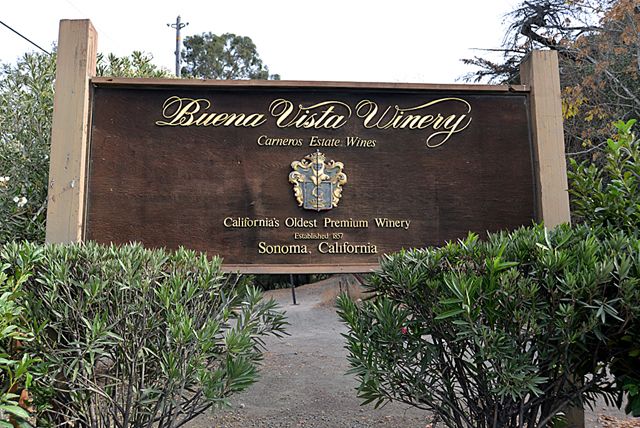
位於索諾瑪城的Buena Vista酒庄是加州最老的酒庄之一,現在還在運營中
Buena Vista的酒窖是華人建造的,現在還可以去參觀
SMART火車重回北灣,等待上車的人們
SMART試運行時乘火車的人群
聖塔羅莎火車站廣場,唐人街在不遠處的二街上。唐人街原址現在是一個停車場。
現在開通的火車線路
COTATI火車站
聖塔羅莎的CHANATE歷史公墓。裡面葬的多是沒有後代的人,有80位左右華人葬在這裡。
Get Wong(王革?)是其中墓園裡唯一有事迹留下的華人。他是名木匠,製作傢具為生,他還因為抽鴉片被警察拘留因此有記錄留下。
紅木區華人協會立的碑: 我們深切思念被遺忘的先民
沒有墓碑,只有一個個印有數字的混凝土塊
- [06/09]紀念我心中的上海早點
- [07/01]偷你一生沒商量:我們應該為孩子設計人生嗎?
- [07/17]網際網路最新最火爆的加密貨幣:以太坊
- [08/01]奧式健保命懸一線:華人會成為醫療難民嗎?
- [09/05]50年彈指一揮間 花的孩子今安好?
- [09/21] 小城故事多:唐人街百年興衰看華人的命運
- [10/05]如何向懶人推銷時尚:舊金山時裝周一瞥
- [10/31]誰讓美國人民生活在水深火熱之中的?
- [11/16]骷髏滿街小鬼猖獗:實拍舊金山亡靈日
- [11/30]為什麼說共享單車是偽環保
- [12/09]治大國如耍小猴:談新稅法對華人碼工們的影響
- [12/18]維爾斯的驚人預言:高端低端和人類的未來
- [01/10]加州淘金熱再起 - 你準備好了嗎?
- 查看:[白露為霜的.最新博文]
- 查看:[大家的.最新博文]
- 查看:[大家的.留學生活]
發表評論 評論 (15 個評論)

- 回復 fanlaifuqu
- 充滿喜和樂!我也會釀酒!

- 回復 fanlaifuqu
- 在鄉下時學的,技術反而高於農民。
白露為霜: 翻老會釀酒,這我還真不知道。有寫過博文嗎?

- 回復 fanlaifuqu
- 玉米,糯米,高粱都是好料,酒味各有千秋!


- 回復 ChineseInvest88
- 很詳細的當地華人歷史~敬佩~
- 白露為霜:50年彈指一揮間 花的孩子今安好?
- 白露為霜:奧式健保命懸一線:華人會成為醫療難民嗎?
- 白露為霜:網際網路最新最火爆的加密貨幣:以太坊
- 白露為霜:紀念我心中的上海早點
- 白露為霜:消失中的藝術天堂:田子坊
- 白露為霜:夢之工廠:香車美女彙集上海國際車展
- 白露為霜:第三波悄然來臨:青少年成為矽谷最好的顧問
- 白露為霜:想混男人幫先當男人婆:談矽谷的性別問題
- change?:藤校中國留學生現身說法抨擊西方左逼
- 白露為霜:寫在Snapchat上市之際:硬體要重回矽谷嗎?
- change?:了不起的新一代留學生
- change?:看美國主流媒體觀察分析加大聖地亞哥中國學生反達賴糾結
- 白露為霜:誰是伯克利騷亂的黑手?
- 白露為霜:H-1B簽證:川普新政能救了華裔科技人嗎?
- change?:不合作的對策
- 白露為霜:聖誕頌歌:走入狄更斯的世界
- change?:一個人自慰,兩個人做愛, 三個人就。。。
- 白露為霜:華人房東要為「幽靈船」慘劇背黑鍋嗎?
- 白露為霜:解密:替政府建個網站為什麼這麼難?
- 新鮮人:這張照片里有我, 誰能找到,發紅包。(原創)

